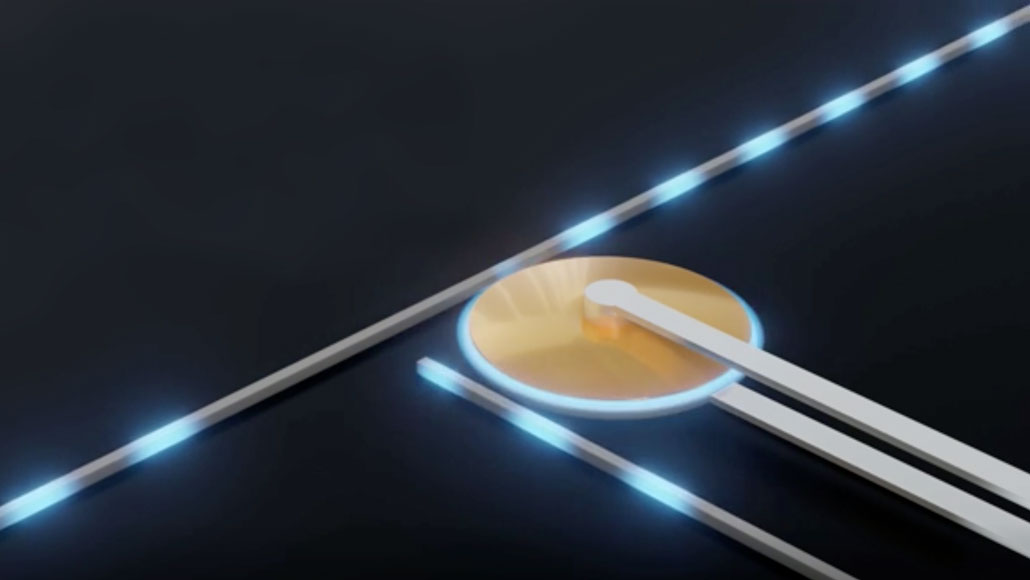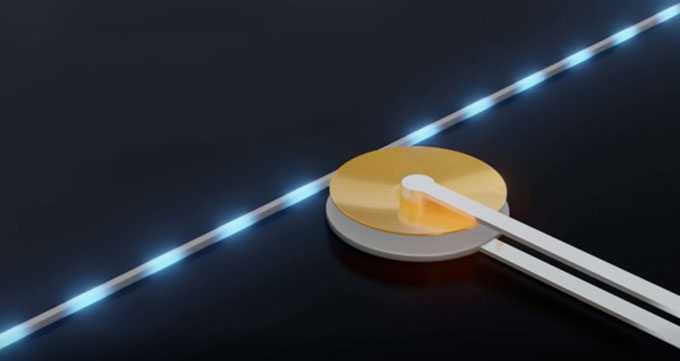
A new kind of tiny switch uses an ultrathin gold disk to catch light waves (blue pulses) traveling down one wirelike structure called a waveguide (flowing top right to bottom left), and transfers that light to a new waveguide. Many of these switches connected in an array could help a computer process information using light, rather than electric current.
S. Kelley/NIST







